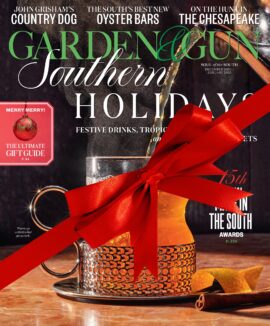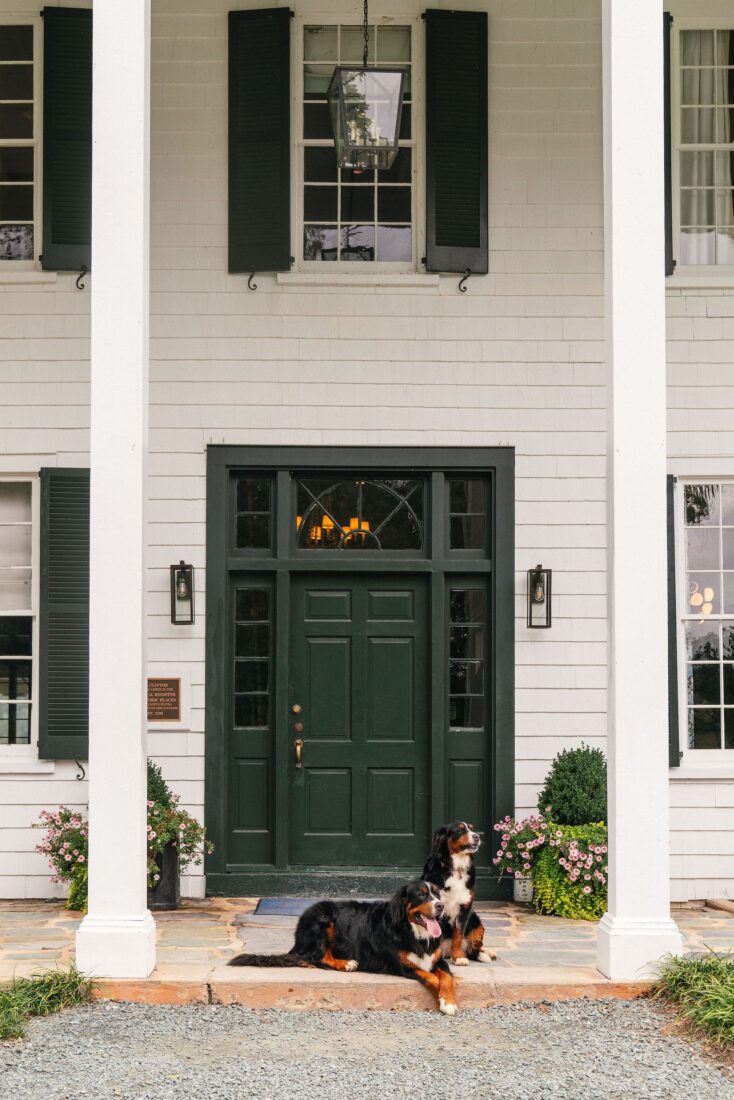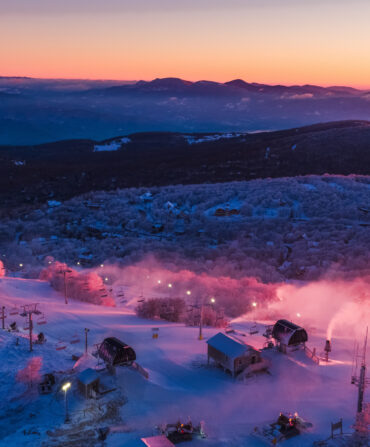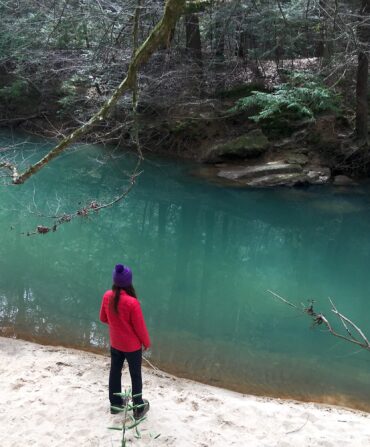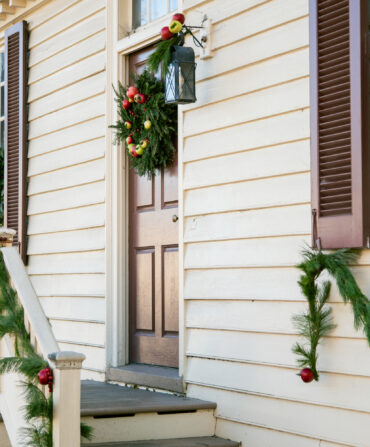If you’re planning a trip to Virginia, home to the first permanent English settlement in North America and eight U.S. presidents, you’ll undoubtedly run across many properties marketing themselves as “historic inns” or otherwise claiming old-time credentials. But what does it really mean to have historic integrity? Being within throwing distance of a landmark? Boasting reproduction colonial columns installed in the 1980s? Hardly.
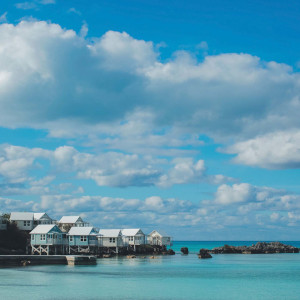
Rather, it’s the people who visited a place and the things that happened there that give a venue its significance. Here are five Virginia inns with luxury accommodations and fascinating past lives—as Revolutionary War taverns, nineteenth-century livery stables, and more—that won’t let a history lover down.
Red Fox Inn & Tavern
Middleburg
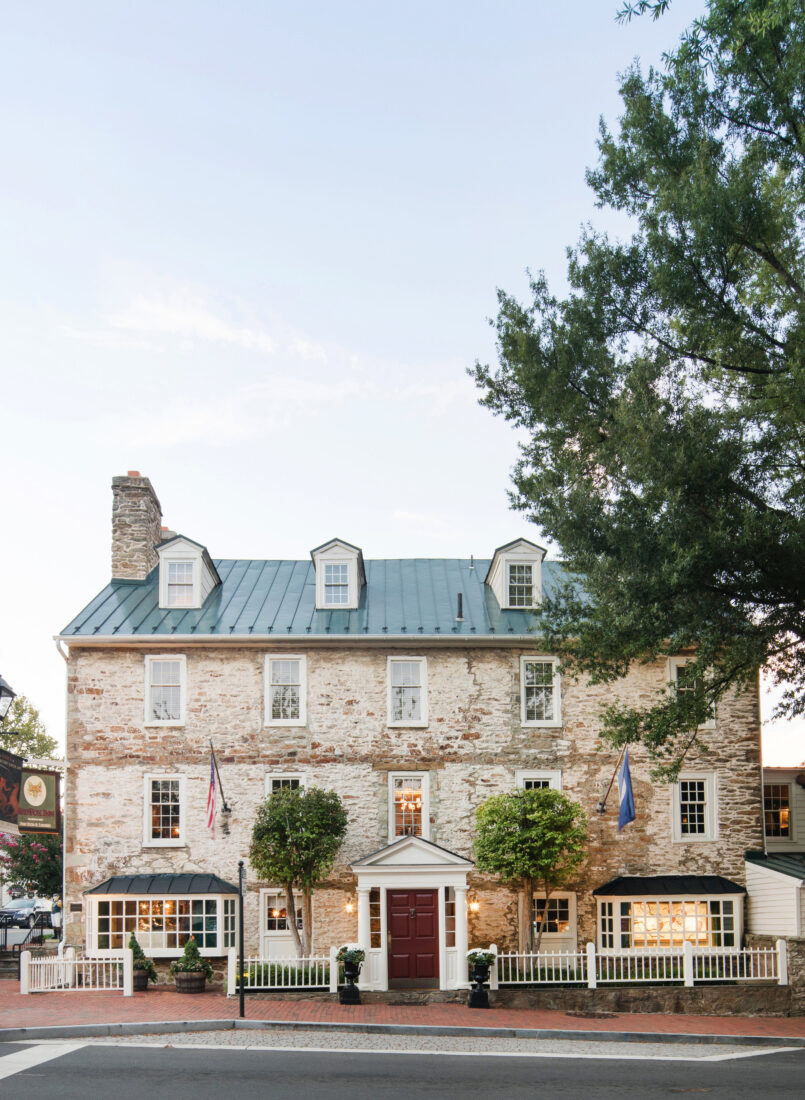
Before it was hosting the likes of President John F. Kennedy and Elizabeth Taylor, Middleburg’s tony Red Fox Inn & Tavern was known as Chinn’s Ordinary, a colonial hostelry established in 1728 by Joseph Chinn. The innkeeper’s first cousin? None other than George Washington. Naturally, the then–land surveyor made a visit, staying at the site in 1748. But his sleepover would not be the last significant event to take place at the Red Fox Inn.
Due to its location between the Shenandoah Valley and Washington, D.C., the city became a flashpoint during the Civil War, especially when Confederate Colonel John S. Mosby began a raiding campaign and used the town as his base of operations. The inn, by then renamed Beveridge House, served as a hospital. Upstairs, strategic discussions unfolded, while downstairs, wounded soldiers received care in the tavern’s rooms. The pine service bar, still utilized in the Tap Room, holds particular historical significance—it was crafted from the field operating table employed by a surgeon in General J.E.B. Stuart’s cavalry.
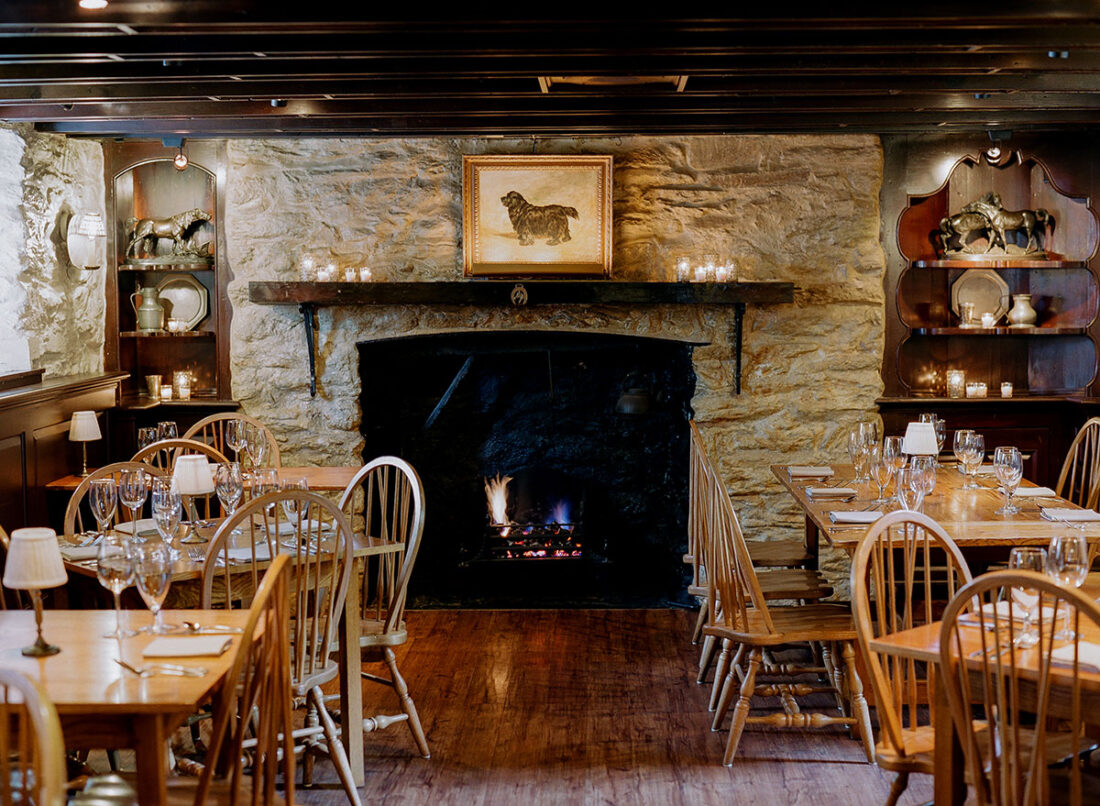
Of course, you won’t just get a stirring history lesson here. Luxury amenities are the site’s calling card, from complimentary in-room breakfast service to four-course game and seafood dinners in the famous Tavern.
The Inn at Gristmill Square
Warm Springs
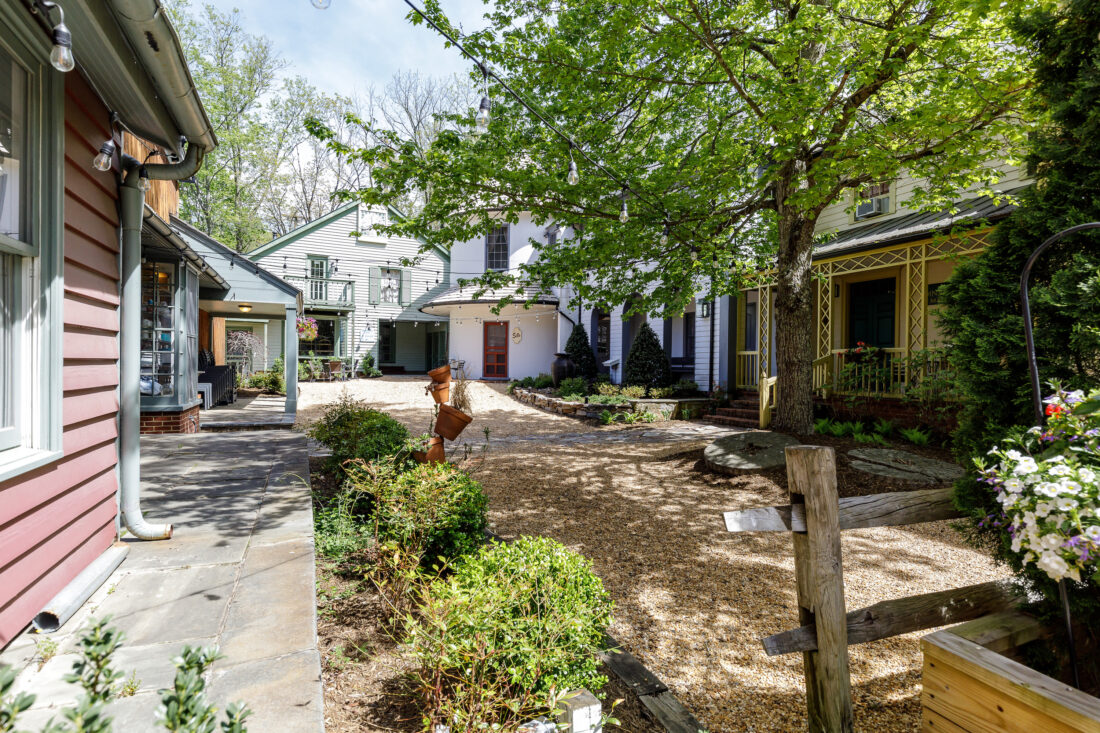
In the aptly named Bath County, you’ll find another village with a fascinating POTUS past. The town of Warm Springs is home to the Warm Springs Pools, natural thermal waters frequented by presidents Thomas Jefferson and Franklin Delano Roosevelt (not to be confused with FDR’s other favorite Warm Springs pools in Georgia)—and a great twenty-first-century excuse to visit.
After soaking in America’s oldest spa, you have two terrific accommodation options: the Omni Homestead, the sprawling 1766-founded resort and operator of the recently remodeled pools, or the cozy Inn at Gristmill Square.
The site of a mill since 1771, this inn consists of eighteen rooms in five original nineteenth-century buildings. But the real star of the show is its award-winning Waterwheel Restaurant, which resides in the present mill built in 1900. The two-story dining room is set around the remaining mill machinery, and the millworks are still visible inside the wine cellar, which you’re invited to visit to hand-select your favorite vintage. But the best part is the restaurant’s tiny hickory wood Simon Kenton Pub—the smallest bar in Virginia, colloquially referred to as “the best four seats in the Commonwealth.”
The Clifton
Charlottesville

Situated just outside of Charlottesville is the Clifton, a Colonial Revival manse on a hundred-acre estate. It was originally constructed in 1799 for Thomas Jefferson’s oldest daughter, Martha, upon her marriage to state delegate (and later governor of Virginia) Thomas Mann Randolph Jr. At the home called Edgehill, the couple raised their eleven children until Thomas’s debts and alcoholism caused them to split, with Martha returning up the hill to live with her father at Monticello.
In 1851, Edgehill was sold to Colonel Richard Wyatt, who renamed it Clifton, and a little over a century later it became an inn. More recently the Clifton received a cosmetic update by Blackberry Farm Design and now operates twenty luxury rooms. The palatial landscape frequently hosts weddings, but you don’t have to be a guest to enjoy the inn’s sophisticated bar or its stunning 1799 restaurant, helmed by Michelin-starred executive chef Matthew Bousquet. Featuring floor-to-ceiling, color-coded bookshelves, the library dining room is guaranteed to inspire you to pick up your next U.S. history book.
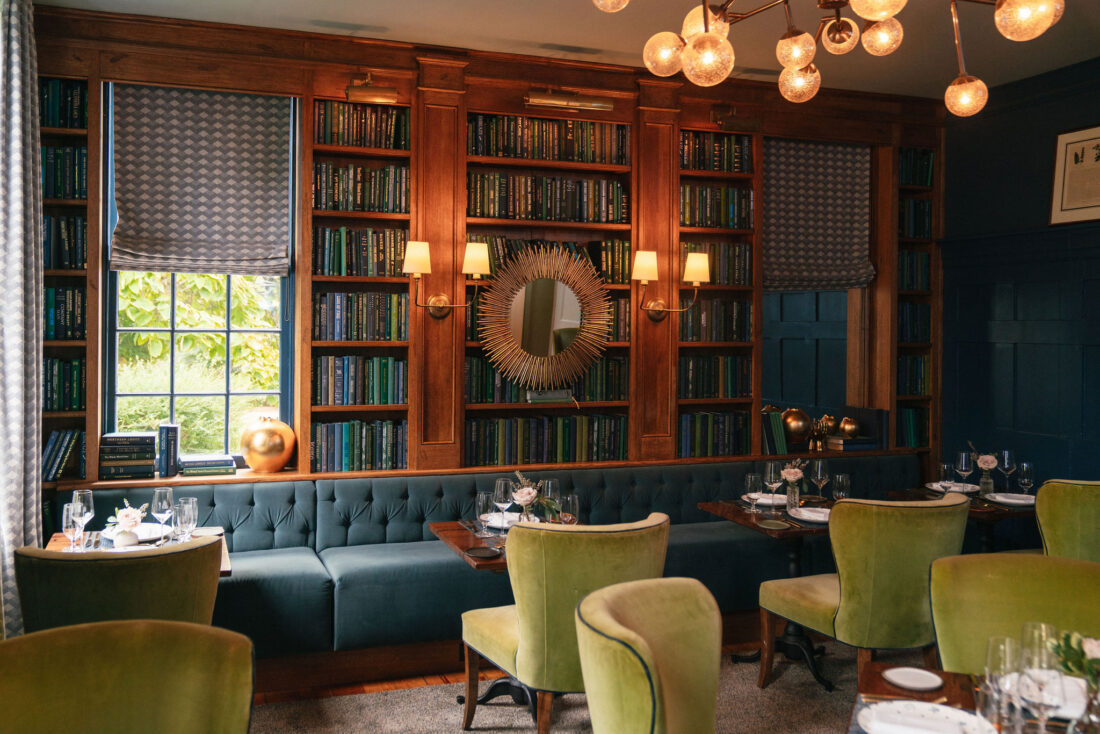
Inn at Willow Grove
Orange
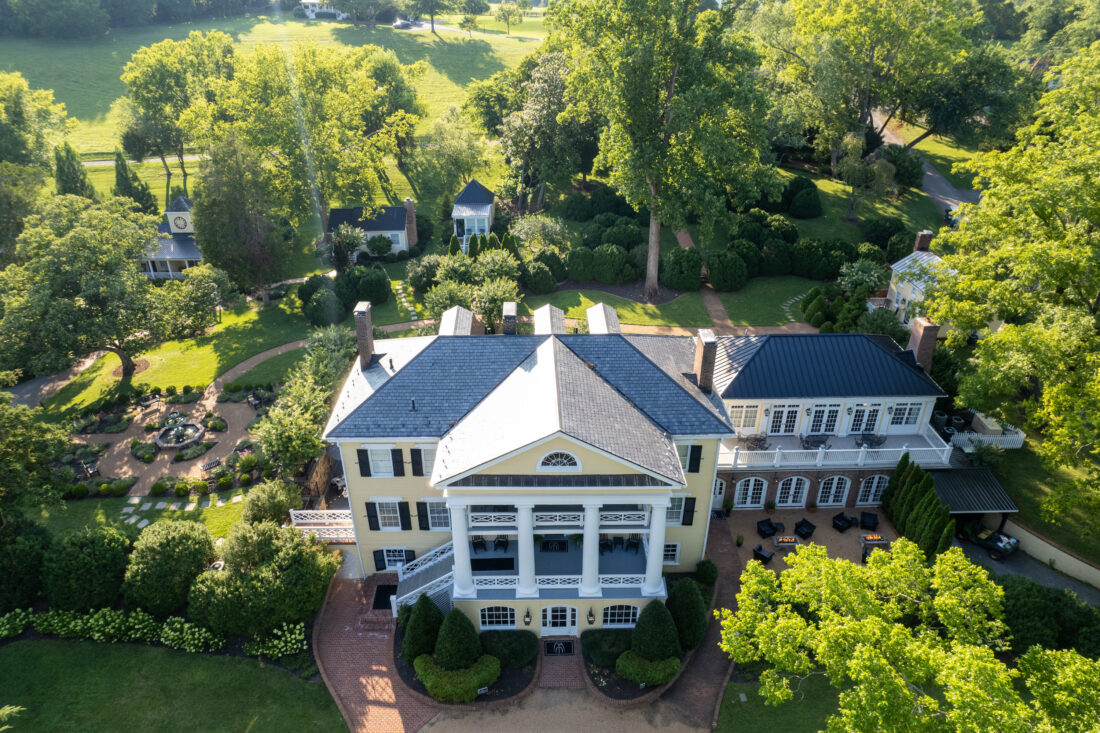
The best time to ponder the Inn at Willow Grove’s historical significance is while indulging in hot beignets delivered to your room in the morning. Nestled between the picturesque towns of Culpeper and Orange, just a stone’s throw from President James Madison’s Montpelier, the property serves up a fascinating story alongside its powdered-sugar-dusted pastries. In 1778, the renowned surveyor Joseph Clark built Willow Grove’s Classic Revival estate, now home to the inn’s lobby and Vintage restaurant. (The president’s widow, Dolley Madison herself, spurred by her son’s financial troubles, sought Clark’s services to survey Montpelier before its sale in 1844.) Willow Grove’s footprint continued to expand in the hands of Clark’s son, William D. Clark, who adorned it with grand columns and hanging porches installed by the same craftsmen Thomas Jefferson used to build the University of Virginia.
According to local historians, this inn too saw Civil War action. During a skirmish at Barnett’s Ford just behind Willow Grove, a twelve-pound cannonball smacked the manor house. There it stayed until the 1950s, when the property owner, the Shackleford family, undertook work on the roof and found it lodged in the timbers.
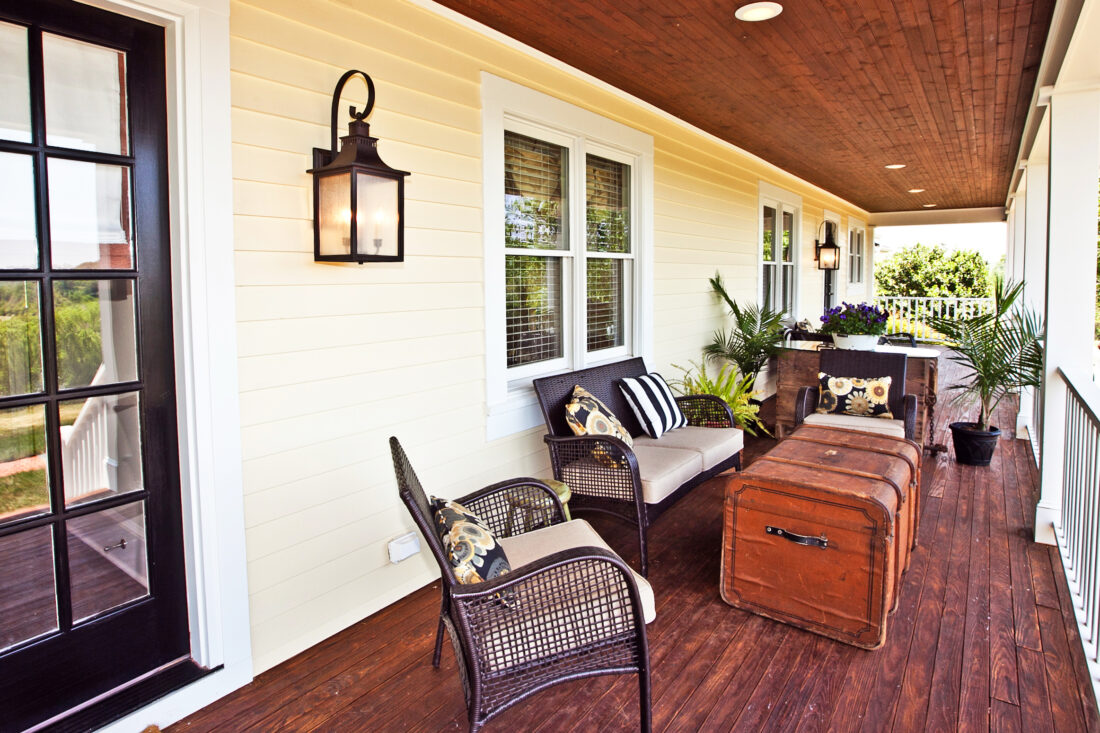
The inn also carries some culinary consequence: The legendary chef Edna Lewis grew up in Orange County in a village founded by formerly enslaved people called Freetown. This remarkable community shaped the young chef, and in turn she reshaped Southern cuisine. After leaving her mark on the food scenes of New York, Washington, D.C., and Charleston, South Carolina, Lewis served as a consulting chef at Willow Grove under former co-owner Angela Mulloy, adding another layer to the inn’s storied past.
The Georges
Lexington
The Virginia Military Institute looms large in Lexington, Virginia. Ann Parker Gottwald couldn’t escape it; the Richmonder married a VMI grad, Thomas E. “Teddy” Gottwald, class of 1979, and they had five sons together, all of whom attended VMI. That meant a lot of visits to the Shenandoah Valley town. What Ann began to notice, according to John Gomes, general manager of the Georges, was a need for cosmopolitan accommodation.
In 2012, the Gottwalds acquired Lexington’s Washington Building, one of only two buildings to survive the city’s devastating 1796 fire (along with the circa-1809 Marshall Building just across the street). Now celebrating its tenth year in operation, the Georges operates five historic buildings on Main Street, including the most recently renovated Livery. Built in 1887 for Captain John Sheridan, that structure was part of a stagecoach line, and today the outline of horse stalls is still visible from the exterior, though you’d hardly believe you were in a former barn from the inside, where each room has been meticulously decorated in stunning modern style.

A masterclass in thoughtful historic preservation, the inn pays homage to three illustrious Georges: George Marshall, a proud VMI graduate and the visionary U.S. Secretary of State behind the Marshall Plan; George Patton, the decorated U.S. Army general and celebrated World War II hero; and naturally, George Washington. Though the first U.S. president never lodged in any of the inn’s accommodations, he famously took his sleep very seriously, even transporting his own mattresses while on campaign. And while he rejected the idea of a crown in favor of his republican ideals, one can envision him being tempted by the Georges’ sumptuous trimmings and ample king-sized beds.

